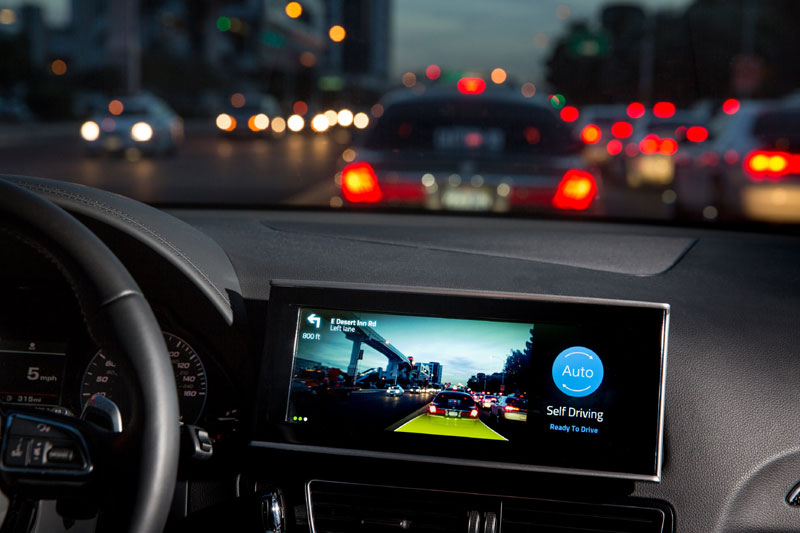
How autonomous cars communicate is a hot topic at the moment. The industry is a blaze with “V2” acronyms these days – V2X, V2V, V2I–to name a few. But Delphi’s latest updates to the car that drove itself across the country last year now could include coining the acronym “V2e,” as in “vehicle to everything,” as the next big thing in the automated driving space.
From streets, to signs, to traffic lights to other cars and even pedestrians, Delphi’s newest concept car is chatting up nearly everything in its path. That may change the face of communication, at least in automobiles.
“Everyone is focusing on the autonomous car, but what may be just as important is how quickly information can be shared between vehicles, people and even the roads themselves,” said Jeff Owens, Chief Technology Officer, Delphi.
“To date, the technical world has created an interface that is great for engineers and scientists, but has given little or no thought to what the consumer might like to see displayed in a car.
“Better yet, what if the car interacted with several smart phones, tablets and wearables in the car?” said Owens. “We think we’ve come up with an interesting concept and one a non-engineer would love—V2e or V2everything.”
To showcase V2e, Delphi demonstrated five scenarios at global consumer show CES in Las Vegas earlier this month. They were:
- Vehicle to pedestrian
- Vehicle to traffic light
- Vehicle to vehicle, where a vehicle cuts into a lane too aggressively for a human driver
- Blind corners
- Social media for ride sharing
Vehicle-to-Pedestrian
Delphi’s autonomous car keeps an eye out for all pedestrians, even the absent-minded ones who step into the street without looking at traffic. Through a special chip in a smart phone, the Delphi engineer posing as the absent-minded pedestrian gets an alert from the phone to look up and stop moving into traffic.
Vehicle- to-Traffic Light
Delphi’s car knows when every traffic light in Las Vegas will be green or red. Inside the car, there is a display counting down how many seconds until the light will change and whether the current speed of the car will make the light. Delphi’s car also anticipates yellow lights, so stopping for a light is gradual, not abrupt, making it safer for the cars traveling directly behind the Delphi automated car.
Vehicle-to-Vehicle
Delphi’s car can see all the cars in the immediate vicinity and can detect when an adjacent car abruptly decides to get into the same lane as the Delphi car. In the real world, this could cause a minor collision, or worse. Not with the Delphi car. It brakes safely every time.
Blind corners
Sometimes streets intersect at strange angles and a human driver can’t see all merging traffic. Either the traffic is beyond our peripheral view or a building or something blocks our view. Delphi’s car manages for that situation too.
Ride Share
The system can notify the driver’s friends and family of where he/she is located and request a ride from their current location.
“This is only the beginning,” said Owens. “We are only in the infancy stage of really understanding the potential of vehicle to everything.”









